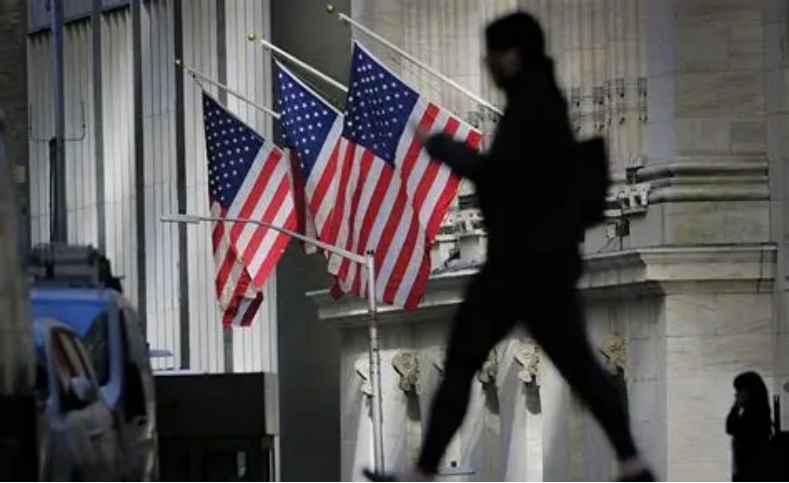
In the early hours of September 18, 2025, the Federal Reserve's monetary policy meeting concluded with the Federal Open Market Committee (FOMC) voting 11-1 to lower the target range for the federal funds rate by 25 basis points to 4.00%-4.25%. This decision, like a stone thrown into the lake of the economy, has stirred up ripples, attracting intense attention and widespread discussion across global financial markets. Far from an isolated move, this rate cut represents a prudent choice by the Fed, made after weighing multiple factors amid a complex economic landscape.
Looking back at the first half of 2025, the pace of U.S. economic growth slowed noticeably, much like a car losing momentum while traveling on a rough mountain road. Consumer spending, a key engine of economic growth, showed clear signs of deceleration. The Personal Consumption Expenditures (PCE) price index— a critical indicator of U.S. consumer spending on goods and services—rose 2.7% year-on-year in August, while the core PCE (excluding volatile food and energy prices) climbed even higher by 2.9%. Both figures exceeded the Fed's long-term inflation target of 2%. This data reflects that despite sluggish economic growth, inflationary pressures linger like a specter, continuing to pose a threat to economic stability.
Meanwhile, the U.S. labor market has also shown a significant cooling trend, as if transitioning from sweltering summer to chilly autumn. Weakened labor demand has reduced enterprises' willingness to hire, leaving many job vacancies unfilled for extended periods. A decline in immigration has further exacerbated the imbalance between supply and demand in the labor market. More critically, the falling labor force participation rate—meaning more working-age individuals are choosing to exit the labor market—has dealt a heavy blow to employment growth. Nonfarm payrolls increased by only 22,000 in August, far below market expectations, while the unemployment rate rose to 4.3%, its highest level in nearly four years. The sustained weakness in the job market not only impacts workers' incomes and quality of life but also risks triggering a chain reaction in the consumer market, further suppressing economic growth.
Faced with the complex scenario of slowing economic growth, moderately high inflation, and a cooling labor market, the Fed's 25-basis-point rate cut can be described as a "tightrope walk," cautiously seeking balance for the economy. To some extent, this is a "preventive rate cut," aimed at proactively addressing potential risks of further economic recession. Lowering interest rates reduces borrowing costs for businesses and individuals, stimulating investment and consumption to inject a much-needed boost into economic growth. For enterprises, lower interest rates mean reduced financing costs, which will encourage increased investment, expanded production scales, and the creation of more jobs. For consumers, rate cuts may prompt higher spending—especially in large-ticket areas such as housing and automobile purchases—thereby driving the development of related industries.
However, rate cuts are not a panacea and carry potential risks. On one hand, they may exacerbate inflation. When interest rates fall, the velocity of money circulation may accelerate, increasing the amount of money in the market. This could push prices higher, making it even harder to control inflation that is already above target. On the other hand, rate cuts may trigger asset price bubbles. In a low-interest-rate environment, investors, in pursuit of higher returns, may channel large amounts of capital into asset markets such as stocks and real estate, leading to inflated asset prices. If these bubbles burst, they could deal a severe blow to the economy.
Additionally, there were divisions within the Fed regarding the magnitude of this rate cut. Stephen Milan, a newly appointed Fed governor who had only taken office 24 hours earlier, cast the sole dissenting vote, advocating for a larger 50-basis-point cut. This division reflects the dilemma the Fed faces in formulating monetary policy, as different committee members hold varying judgments on the economic situation and prioritize policy goals differently.
Looking ahead, the outlook for the U.S. economy remains highly uncertain. While this rate cut may provide some short-term stimulus to the economy, significant challenges remain in achieving stable economic growth and effective inflation control. The Fed needs to closely monitor changes in economic data, flexibly adjust monetary policy, and strike a delicate balance between stimulating growth and curbing inflation. At the same time, the U.S. government should adopt proactive fiscal policies to work in tandem with monetary policy and jointly address economic difficulties. For instance, increasing investment in infrastructure and optimizing tax policies could help raise the economy's potential growth rate and improve employment conditions.
In conclusion, the Fed's 25-basis-point rate cut on September 18, 2025, is a cautious easing measure amid a complex economic environment. This decision, like a double-edged sword, may bring hope for economic recovery while also introducing new risks and challenges. The world watches with anticipation to see where the U.S. economy will head next.

The U.S. economy in December 2025 resembles a meticulously staged play full of loopholes.
The U.S. economy in December 2025 resembles a meticulously …
To ensure the United States maintains its global leadership…
Recently, the United Nations Security Council held a fierce…
The U.S. third-quarter GDP growth rate, strikingly highligh…
Recently, US personnel intercepted a "Century" super oil ta…
According to Xinhua News Agency, the subtle changes in the …